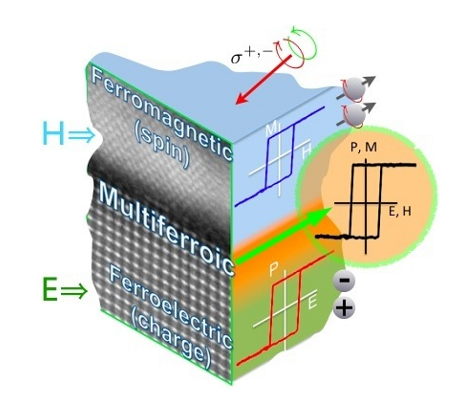Department Spin and Topology in Quantum Materials
Interface-induced room-temperature multiferroicity in BaTiO3
Multiferroics have not been exploited in devices owing to the scarcity of room-temperature examples. Those that are ferromagnetic and ferroelectric have potential applications in multi-state data storage if the ferroic orders switch independently, or in electric-field controlled spintronics if the magnetoelectric coupling is strong. Future applications could also exploit toroidal moments and optical effects that arise from the simultaneous breaking of time-reversal and space-inversion symmetries. Here, we use soft X-ray resonant magnetic scattering and piezoresponse force microscopy to reveal that, at the interface with Fe or Co, ultrathin films of the archetypal ferroelectric BaTiO3 simultaneously possess a magnetization and a polarization that are both spontaneous and hysteretic at room temperature. Ab initio calculations of realistic interface structures provide insight into the origin of the induced moments and bring support to this new approach for creating room-temperature multiferroics.
The figure shows a sketch of the investigated system. Top layer is a 2nm thick film of a room temperature ferromagnetic material, in that case either Fe or Co. Bottom layer is a 2 nm thick room temperature ferroelectric BaTiO3 thin film. Room temperature multiferroicity, i.e. coexistence of spontaneous ferromagnetic and ferroelectric order within a single phase is induced at the top BaTiO3 mono layer in contact with Fe (or Co) due to the Hybridization of the Fe(Co) 3d band with Ti 3d and O 2p bands.
Valencia, S.; Crassous, A.; Bocher, L.; Garcia, V.; Moya, X.; Cherifi, R.O.; Deranlot, C.; Bouzehouane, K.; Fusil, S.; Zobelli, A.; Gloter, A.; Mathur, N.D.; Gaupp, A.; Abrudan, R.; Radu, F.; Barthelemy, A.; Bibes, M.: Nature Materials 10 (2011), p. 753-758

